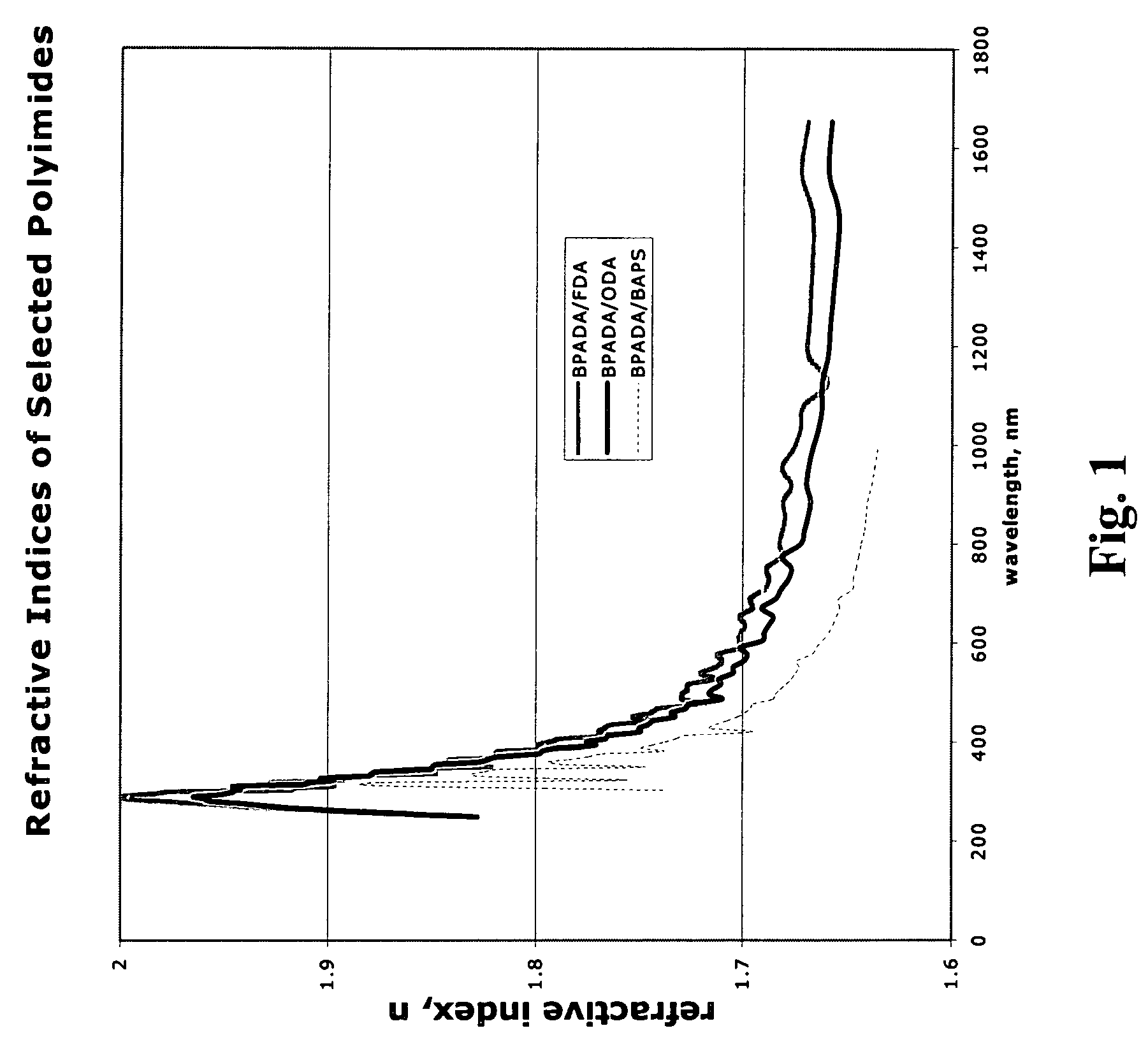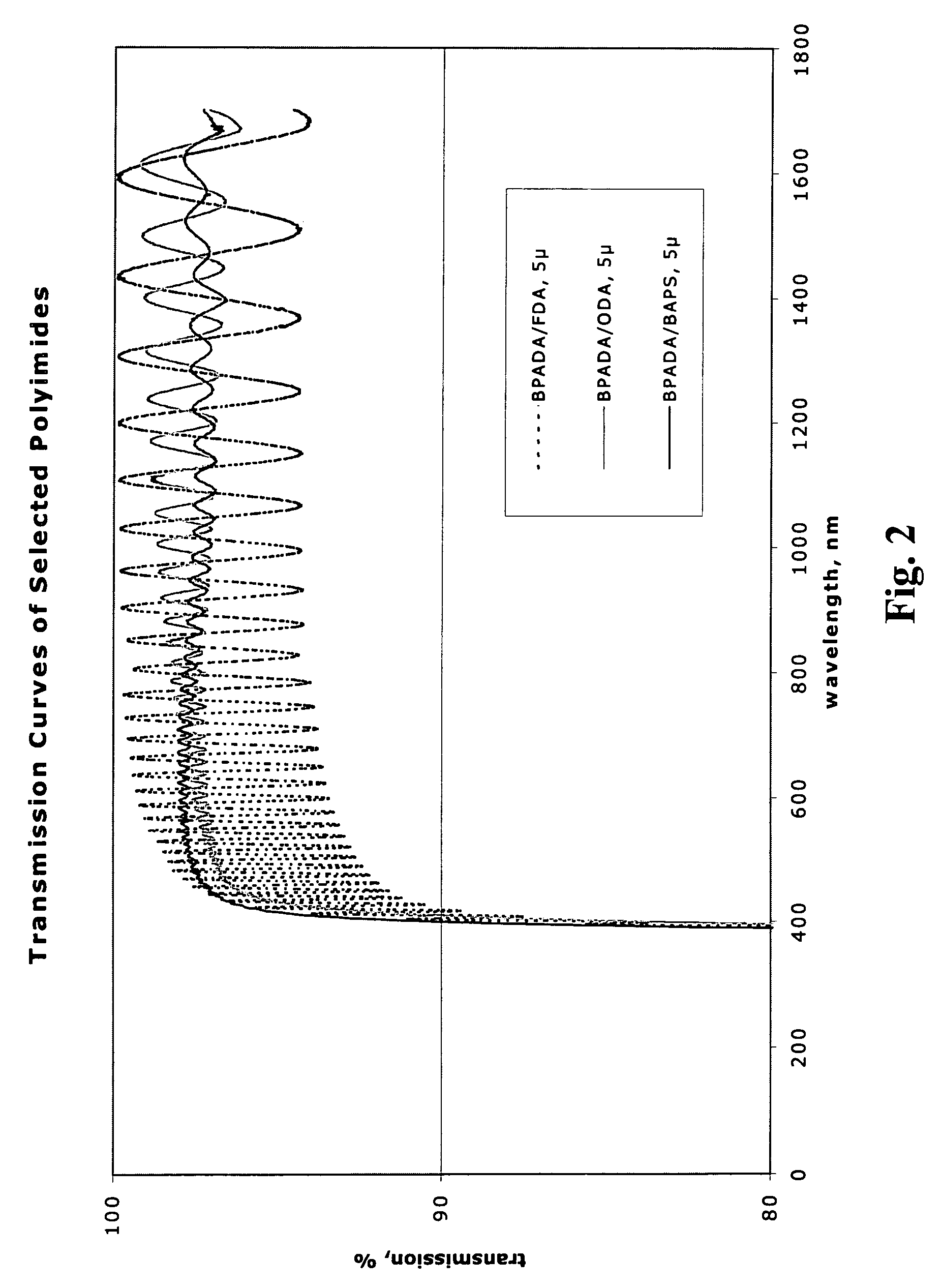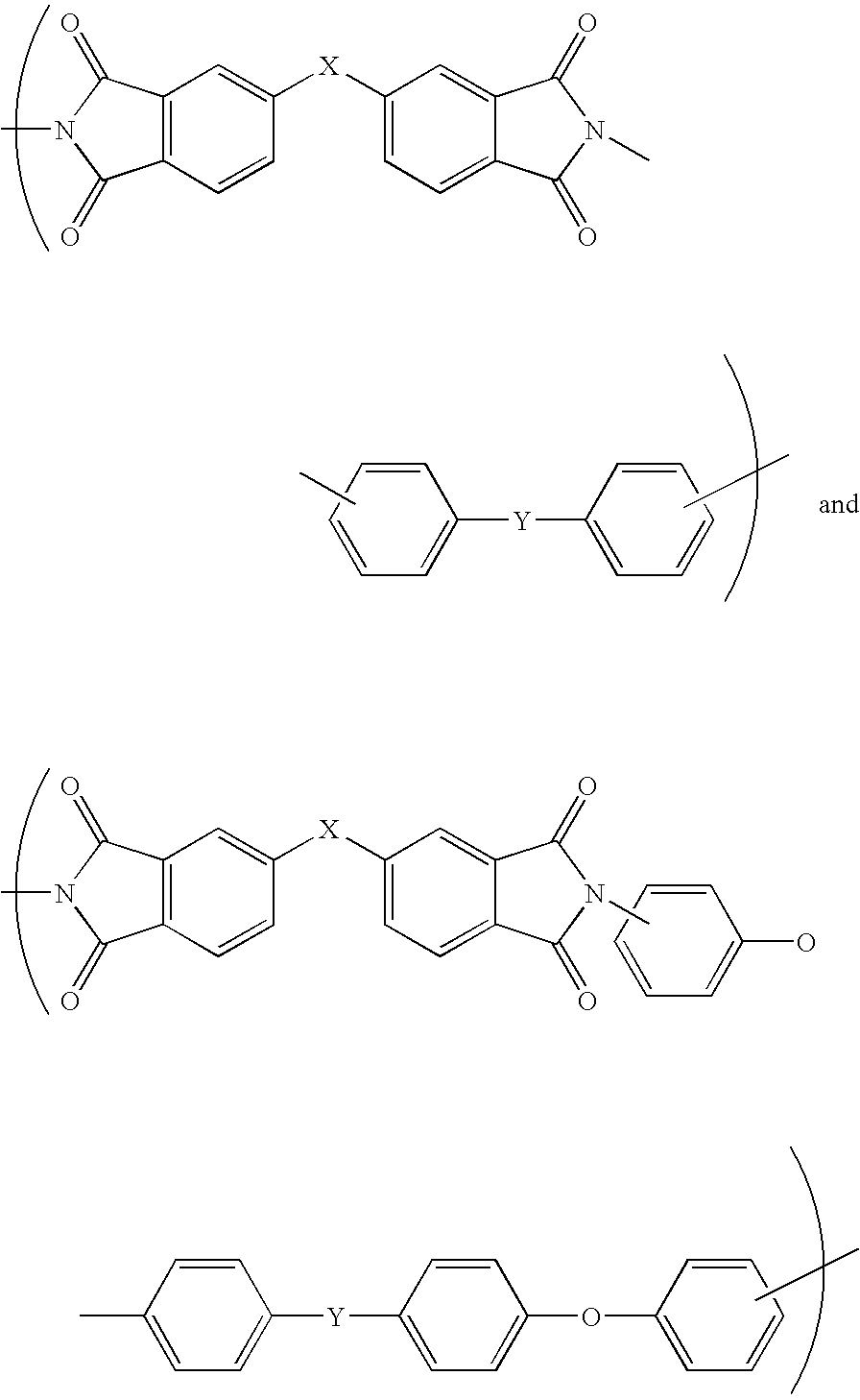Polyimides for use as high refractive index, thin film materials
a technology of polyimide and thin film, applied in the field of polyimide compositions, can solve the problems of inability to form relatively thick films, low refractive index, optical loss, etc., and achieve good thermal and oxidative stability
- Summary
- Abstract
- Description
- Claims
- Application Information
AI Technical Summary
Benefits of technology
Problems solved by technology
Method used
Image
Examples
example 1
High Refractive Index Poly(etherimidesulfone) Composition
[0036]In this procedure, 20.77 g (0.04803 mol) of bis[4-(4-aminophenoxy)phenoxy]sulfone (BAPS, obtained from ChrisKev) were charged into a 500-mL, 4-necked flask equipped with an addition funnel with nitrogen inlet, a mechanical stirrer, a condenser with attached nitrogen outlet, and a temperature probe. Nitrogen gas was passed through the system, and the system was kept under nitrogen for the duration of the synthesis. The BAPS was dissolved by adding 102.53 g of dimethylacetamide (DMAc, obtained from Aldrich) and stirring. In a separate flask, 25.00 g (0.04803 mol) of bisphenol A dianhydride (BPADA, obtained from ChrisKev) were dissolved by adding 120.13 g DMAc and stirring. The BPADA solution was transferred into the addition funnel and slowly added to the stirring BAPS solution. After the addition was finished, 38.12 g more of DMAc was added to bring the total solids level to 14.93%. The resulting solution was stirred at r...
example 2
A High Refractive Index Poly(etherimide) Composition
[0039]In this example, 16.74 g (0.04803 mol) 9,9-diphenylaminofluorene (FDA, obtained from Aldrich) were charged into a 500-mL 4-necked flask equipped with an addition funnel with nitrogen inlet, a mechanical stirrer, a condenser with attached nitrogen outlet, and a temperature probe. Nitrogen gas was passed through the system, and the system was kept under nitrogen for the duration of the synthesis. The FDA was dissolved by adding 112.28 g of N-methylpyrrolidone (NMP, obtained from Aldrich) and stirring. In a separate flask, 25.00 g (0.04803 mol) of BPADA was dissolved by adding 125.19 g NMP and stirring. The BPADA solution was then transferred into the addition funnel and slowly added to the stirring FDA solution. The resulting solution was stirred at room temperature for 24 hours after which 70 mL of toluene was added in to the viscous, light yellow solution, and a Dean-Stark tube was attached to the flask. The solution temperat...
example 3
A Mixed Diamine Poly(etherimide sulfone)
[0041]This procedure was carried out by dissolving 2.63 g (0.0131 moles) of 4,4′oxydianiline (4,4′-ODA, obtained from ChrisKev) in 45 g of NMP in a 2-necked 250-mL flask equipped with an addition funnel, a condenser with nitrogen bubbler, and a magnetic stir bar. Next, 5.69 g (0.0132 mol) BAPS was added to this solution, and the resulting mixture was dissolved by stirring. The procedure was continued by dissolving 13.70 g BPADA into 75.54 g NMP, and this solution was added to the stirred diamine solution under nitrogen. Stirring was continued for 24 hours. A Dean-Stark trap was attached to the flask, and 25 mL of toluene was added to the solution. The temperature was slowly brought to 170° C., and after two hours, 25 mL of toluene was added. The temperature was kept at 170° C. for 24 hours, and then the flask was allowed to cool to room temperature. The solution was precipitated in 500 mL of stirred methanol (Spectrum) and dried in a vacuum ov...
PUM
| Property | Measurement | Unit |
|---|---|---|
| weight average molecular weight | aaaaa | aaaaa |
| temperature | aaaaa | aaaaa |
| thickness | aaaaa | aaaaa |
Abstract
Description
Claims
Application Information
 Login to View More
Login to View More - R&D
- Intellectual Property
- Life Sciences
- Materials
- Tech Scout
- Unparalleled Data Quality
- Higher Quality Content
- 60% Fewer Hallucinations
Browse by: Latest US Patents, China's latest patents, Technical Efficacy Thesaurus, Application Domain, Technology Topic, Popular Technical Reports.
© 2025 PatSnap. All rights reserved.Legal|Privacy policy|Modern Slavery Act Transparency Statement|Sitemap|About US| Contact US: help@patsnap.com



